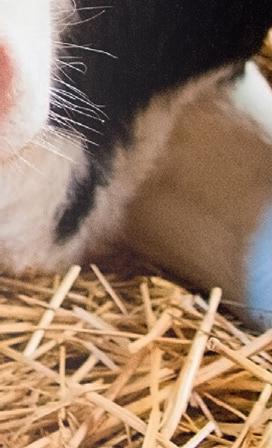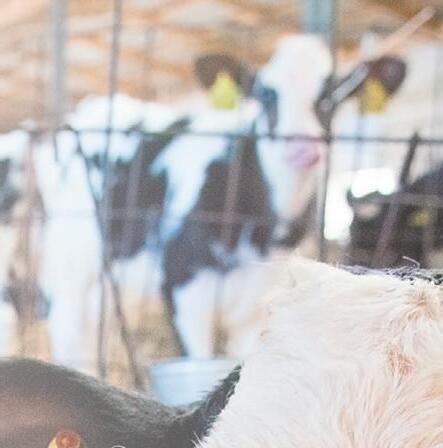
3 minute read
Top tips to achieve a tight calving block
It is important to have ample labour to handle calving
GEORGE GILES
benefits from having a longer break between calving and bulling, it is also important to have ample labour to handle calving,” he adds.
Areas Of Focus
TO help achieve a tight block calving period, the areas of focus include the following:
■ Nutrition: Assessing the condition of your herd is key to achieving good levels of fertility, says Mr Giles
“Body condition score should be at three at calving and 2.5 at bulling,” he says, adding that over- or underfat cows can reduce fertility.
Nutrition is an important factor and should be discussed with your vet and nutritionist to ensure targets, mineral and trace elements requirements are met.
■ Fertility: Any problem cows should be assessed and any issues should be promptly treated.
Mr Giles says that there are lots of reasons that fertility could be negatively affected, including the presence of high levels of disease within the herd.
“Bovine viral diarrhoea, infectious bovine rhinotracheitis, leptospirosis,


Johne’s and neospora are diseases which are known to affect fertility.”
■ Culling: Mr Giles says implementing a culling policy is not an easy task, but it is important to do so as any late calvers will affect the next block.
“A culling policy will often be farm-specific and must work with involuntary culls such as bovine TB reactors or cows with long-term mastitis.”
■ Bulling: Mr Giles says: “No-one wants to be caught out with bull fertility, so testing bull fertility six weeks before bulling gives confidence and time to correct problems.”
It also allows time for a new cycle of semen to be produced.
Up to 20 per cent of bulls are sub-fertile, and Mr Giles says it is important to remember that last year’s performance does not mean there will not be problems in subsequent breeding seasons.
IN THE FIELD DAN AND LIZ NATTLE, BODMIN
DAN and Liz Nattle have been working with Mr Giles to tighten up the calving window for their 260head spring-calving herd of British Friesians which they run at Lower Rosewarrick Farm, Bodmin.

Currently, the farm is operating a 14- to 16-week block, but the couple aim to tighten this block to 10 weeks this year.
Mr Nattle says: “The cows which calve first are the first to pay the bills. They also give us a longer period in milk and increase ease of management.”
Their target is for at least 90 per cent of cows to calve within the first six weeks of calving.
Cows have an artificial insemination window of six weeks, with the heifers given a window of three weeks, before a Hereford sweeper bull is introduced.

Mr Nattle says: “We had already started tightening our calving window before we started working with Mr Giles, but he has upped the ante.
“We challenge each other to bring out the best in the herd.”

A strict culling policy has now been introduced, says Mr Nattle, and there is now a focus on disease management.

“We have good results for bulling, so are now focusing on management factors such as disease. We have eradicated Johne’s in the herd and lowered the cell count from 185 to under 100,” he says.
Two years ago they started mineral bolusing the cows at dry-off after Mr Giles picked up on low iodine levels. The
IN CALVES boluses have helped to improve this.
While it has not been an easy process, the benefits are worth it, says Mrs Nattle.
He says: “It is hard within those first years losing cows which you know are good, especially from a pedigree perspective. However, we know it is right for our business.”

■ Running a 114-hectare (280acre) tenanted farm since 2006


■ Averages 5,300 litres per cow annually at 4 per cent fat and 3.3 per cent protein
■ Aim to graze 10 months a year on a 12 hour break rotational system
■ Heat detection is done using tail paint

Coccidiosis and Cryptosporidium, both diarrhoea causing infections common in young calves, can be fatal and are hard to treat.

Evans Vanodine recommends using Target Powergel and GPC8 in your cleaning and disinfection programme and following our calf pen cleaning routine to help reduce cases.


This routine has been tried and tested and is shown to be effective in destroying the oocysts which enable infections to spread.
Find out more and read the full article on our










